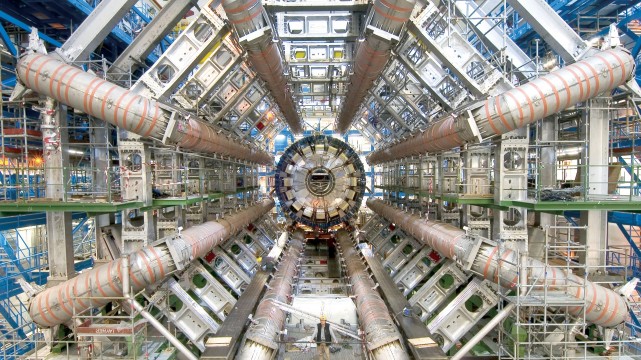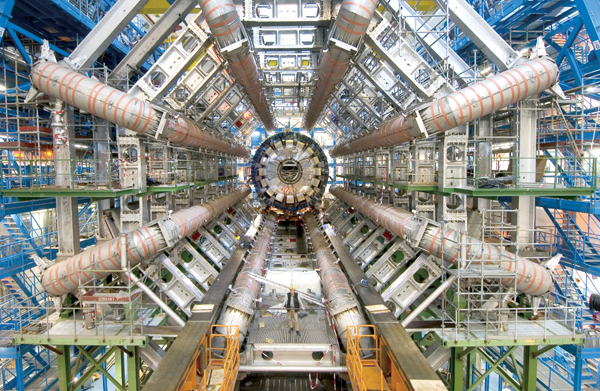
“As a layman, I would now say, I think we have it!”
Rolf Heuer, Director General of CERN research lab in Geneva, Switzerland, was exuberant last week as researchers from the Large Hadron Collider there announced the discovery of a new fundamental particle. Since then, the Higgs boson and its 83-year-old Scottish namesake Peter Higgs have been catapulted upward into international fame. The discovery made the cover of last week’s Economist, has been re-packaged as a spoof reveal by the late Steve Jobs and has been explained as an animated comic. The Bay Area has a big community of physicists involved with the project, and the Physics Department at UC Berkeley has scheduled a special seminar on the topic this coming Friday.
But what is this new particle all about, and what’s a boson, anyway?
Any particle of matter can be classified into one of two categories depending on how it behaves in the presence of other particles like it. Fermions, which are one of these particle types, prefer to keep a healthy distance between each other. The fermionic nature of electrons has a huge influence on their spatial arrangement in matter. It explains why magnets are magnetic, why gold is a conductor but wood is not, and more fundamentally, why carbon, oxygen, and all the other elements have the distinctive properties that facilitate life and chemistry as we know it here on Earth.
In contrast to fermions, particles that are bosons love to sit on top of each other, and there is no limit to the number of bosons that can occupy a point in space at a given time. Photons (the fundamental particles of light) are bosons, for example, and you can light up an empty room as brightly as you want without running out of space.
